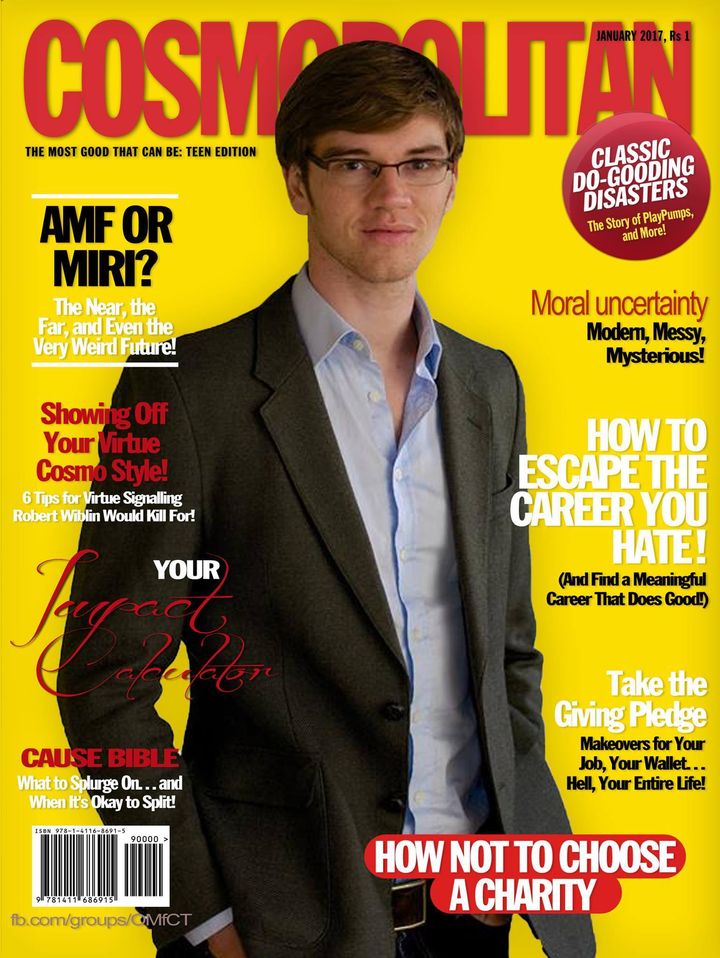The international charity, Schools and Donations is revolutionizing the nonprofit sector in a huge way: by spreading ideas of cost-effectiveness to donors in the 3-6 age range. Wow!
“The idea is simple,” says Caxter Bow, founder, chairman, and CEO of SaD, “Allowances are not evenly distributed internationally. While many American children receive sizable allowances on a semi-regular basis, many toddlers in the developing world frequently don’t have the luxury of adequate nutrition, or their own private yards, making it difficult to rake leaves for money. If you make even $930/year in allowances, you’re already in the global 1% of individuals in the 3-6 age range. So the case for giving to the less well-off, whether through direct cash transfers to poorer families, or to effective interventions that decrease the probability of neonatal and childhood deaths, is honestly pretty clear.”
Adds Bow, “Allowances also make up a large portion of the world economy. In the US alone, the nation’s 70 million plus children receives an average of $780 a year, for a total of over 60 billion dollars. Our rebranding is totally worth it if we have even a small chance of tapping even 1% of that.”

Some youngsters excited about the prospects of effective charity.
SaD started as an organization promoting effective giving ideas among high schoolers. Some charities and interventions can do hundreds of times more good than others. So why not try our best to identify what they are and donate to them? SaD has had soaring successes with their ambitious curriculum, hip internet videos and active engagement with students high school teachers. Since meeting up with an Youtube celebrity, Gaven Ernsmonee, SaD has had tens of additional views. Tens!
Academics were also sold on this idea. William MacAlister, a Scottish professor of psychology at Oxford, says that this idea has a strong theoretical basis:
“So we know from past studies that younger children are more likely to take a rigorous, quantitative approach to moral value.” Prof. MacAlister says on a call with me, “and they’re also more likely to give to the less privileged out of pure altruism rather than because of ‘warm glow’ effects or to show off status markers.” “These two factors combined naturally make toddlers a natural audience for the “quantitative do-gooder” approach of the SaD movement.”

When he’s not playing on his bagpipes or exchanging mushrooms, William MacAlister, renowned Oxford psychology professor and charity advocate, also does modeling in his spare time.
Early attempts to expand SaD’s curriculum to toddlers ran into unexpected difficulties. For example, a key element to avoid in charity evaluation is “scope insensitivity” -- failing to realize that problems that affect many more people are much more important, in proportion to their size. “We originally wanted to illustrate how some charities can prevent over 1000 cases of blindness for the cost of training a single guide dog,”says an unnamed SaD volunteer. “But unfortunately, most of the kids we were trying to teach couldn’t count that high. We asked Annie what number came after seven. She said “infi-nity”. Props to her family for teaching important mathematical concepts I guess, but it really derailed the conversation at that point.” Adds the volunteer, “We also wanted to use Peter Singer’s drowning child argument. But, you know, most of our audience can’t swim, and have never worn a suit before. So it was all really confusing.”
Still, Bow and the SaD team were undeterred. An important pillar of SaD is “Neglectedness”, says Bow. “Our other two pillars--Importance and Tractability--tells us that we want to find donors who are important and can be persuaded to give, but we are also looking for new donors who other fundraisers have neglected to consider. And frankly -- I was surprised by this -- not a single other fundraising group I’ve looked at have even considered targeting toddlers for their primary donor base. This is an incredible opportunity!”
At press time, Caxter was arguing with a brood of chickens, claiming that animals should do their fair share in furthering the animal rights movement.
The head hen did not respond to our requests for comments.
